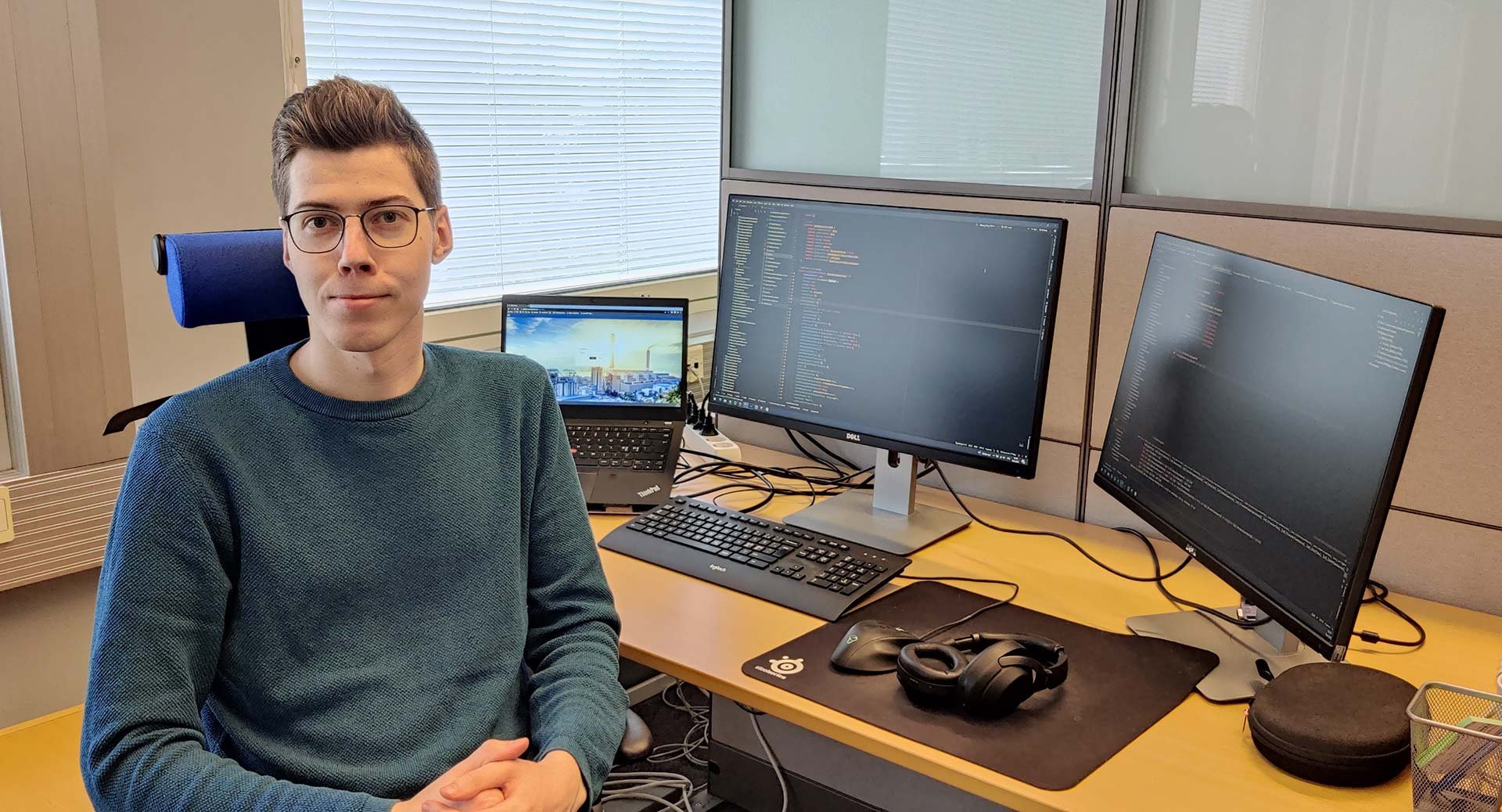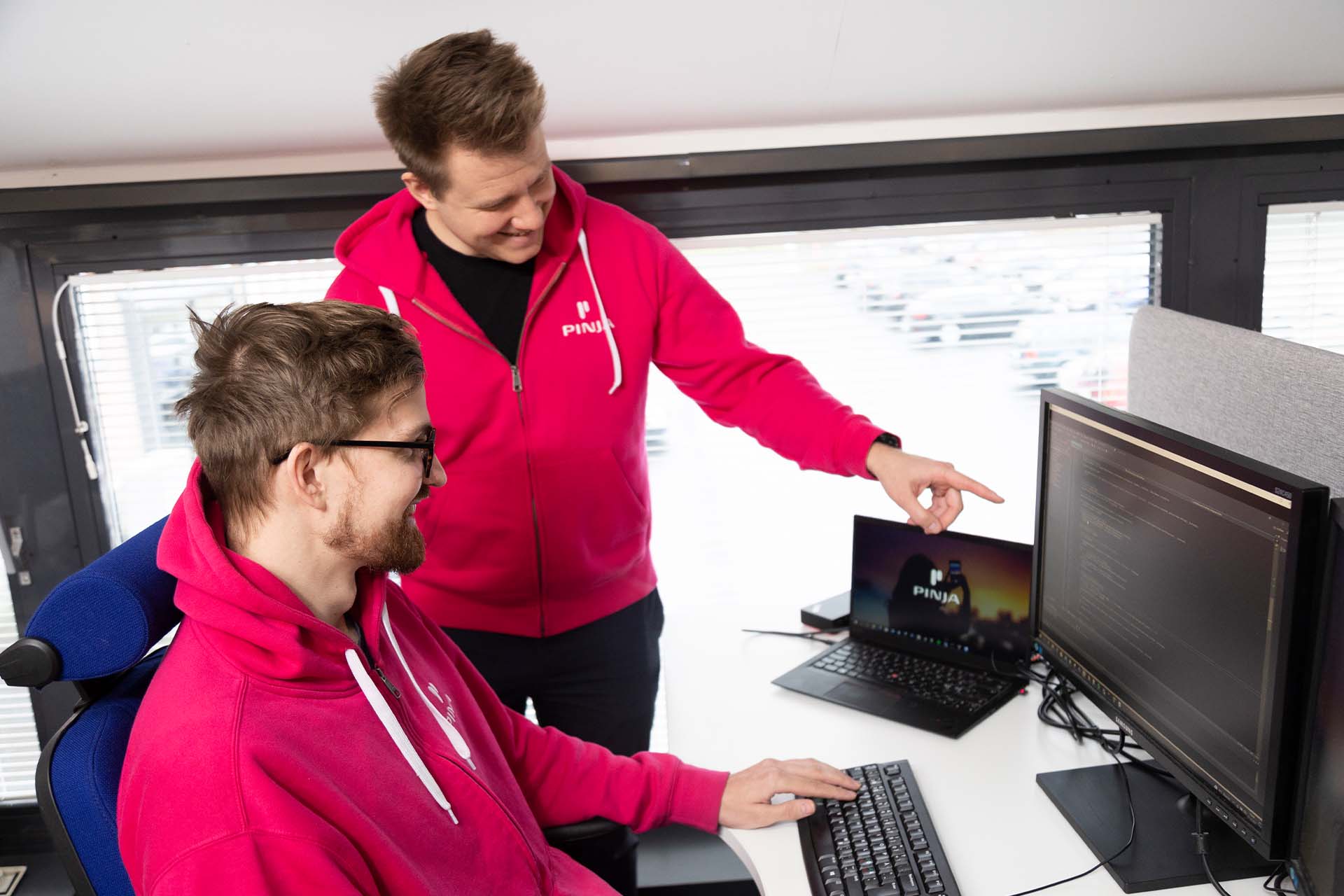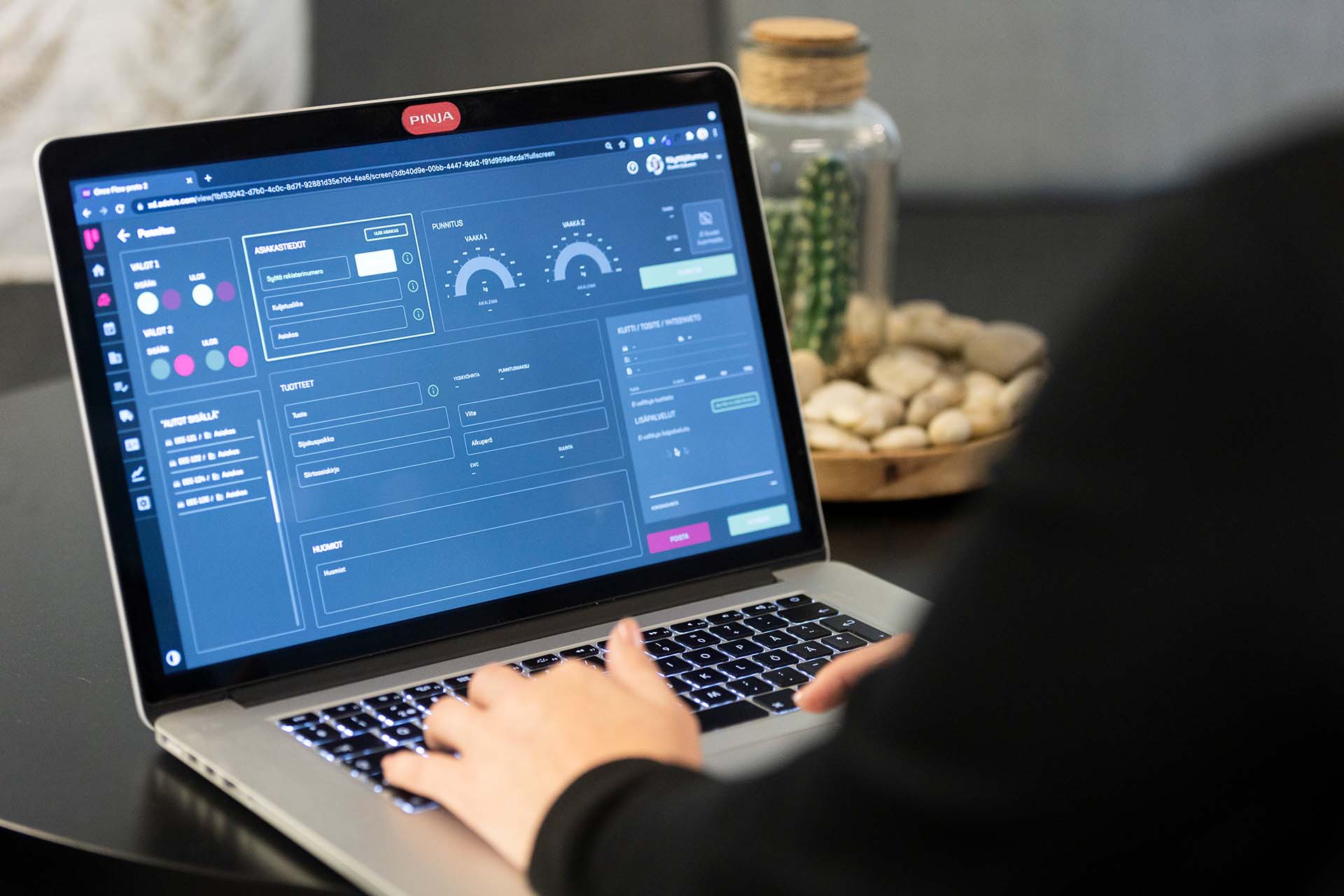
Pinja already has a wide range of different implementation models for arranging the work of approximately 500 employees. After the most acute pandemic has receded, many have returned entirely to the office, some continue largely remote, and many have chosen some sort of hybrid model – with the emphasis they want.
Key criteria for choosing your own working model include time, peace of mind, and concentration, one’s own job description, and personal preference in terms of being social. In this blog post, Matias Töyrylä (photo), who works at the office, Timo Virkki, who works remotely, and Merja Ruuska, who uses a hybrid model, tell their stories.
Software developer Matias Töyrylä enjoys his time at the office
Tampere-based software developer Matias Töyrylä works on the iPES by Pinja system, which specializes in production planning and manufacturing control. Matias has about three years of experience with Pinja, and he says that he has enjoyed developing the same product throughout this time. Matias’ team consists of 7 people, working practically all over Finland.
Matias says that he returned to the office at Pinja’s Tampere office after a long pandemic period, initially because he wanted to be more accessible to new employees. He soon found that he could easily continue working this way for longer, and the commute hasn’t been a barrier either – Matias can easily get to the office by bus in less than fifteen minutes.
– I have found that it is often easier to brainstorm and help face-to-face, especially with new employees. It’s also nice to break up the day, for example by going out for lunch. Office work also helps make clearer distinction between work and leisure. During my commute, I can usually take a break from my work and reset my mind for leisure, says Matias.

Matias considers his own workplace to be nice and peaceful, and it was also recently refurbished. He is not bothered by the soundscape of the office environment or the occasional commotion.
– Another good thing about working closely with people is that you sometimes hear informal information from outside your own team. My work is generally quite independent, so the breaks also add a nice social element to the day, Matias sums up.
Software developer Timo Virkki’s choice is flexible remote work
Timo Virkki is also a software developer from Tampere, and he also works mainly on the iPES product. The job description focuses on software design and implementation work, which is mainly independent and team-based development. Timo sometimes participates in client meetings as a technical expert supporting the solution architect.
Timo has been working on iPES since 2013 and, in his own words, he has never got bored.
– The long career has allowed me to concentrate and focus on my work. Iteration allows you to continuously improve your work, and we develop new features on top of existing ones. Each project is different, yet at the same time the environment is familiar.
Timo has chosen to work remotely, and one of the main reasons for this is to save time on commuting. Secondly, Timo says he likes to work in his own home office, decorated to his own preferences. Instead of using the workstation provided by his employer, he has decided to continue using his own set of tools, which we also use for his own projects.
– It’s mainly a matter of personal preference; I worked remotely on a smaller scale even before the pandemic started. I get on well on my own and I like the peace and quiet at home. A good addition is that I get to pet my cats during the working day, Timo says with a grin.
However, Timo, who mainly works remotely, says that he also visits the office from time to time. A large part of the iPES development team works at the Tampere office. But what is a good enough reason to leave home for the office?
– Cake! Timo shouts.
Data warehouse specialist Merja Ruuska chose the hybrid model
Merja Ruuska, a data warehouse specialist, works in Nummela, Vihti, and her job description includes a lot of client work. Merja develops data warehouse solutions together with clients and builds ETL processes (extract, transform, and load), which help transform data from many different data sources into an easy-to-use format that supports business operations efficiently.

Merja is an experienced employee in her field, but Pinja is relatively new to her: she started in February 2022. In her previous job, Merja was able to work almost entirely remotely for two years, so she chouse to do things differently.
– I work alternately at home and at our nearest office in Espoo. During a long period of remote working, I sometimes felt like I was going to get cabin fever. I find myself needing human contact – it’s a completely different thing to be face-to-face with people instead of seeing them on the screen. At the office, you get to chit-chat with colleagues while you’re working, Merja says.
At home, Merja says she works on days when there are a lot of meetings or tasks that require concentration. Otherwise, she likes to visit the office, which is also easily accessible. The commute takes no more than half an hour, and once there, you can park your car for free in the garage as an employee benefit.
In terms of the work, Merja doesn’t notice much difference between working remotely or in the office. Both places have a good workstation and matching equipment, as Merja’s employer has also provided her with a standing desk, an office chair, and a separate screen for her home.
– You do the same job in both places, but I appreciate the flexibility. It makes it easy to organize a visit to the dentist, for example, or to let a renovator in. And when the roads are slippery, you don’t have to go out and try your luck. At home I enjoy the beautiful view of my own garden, but I must make my own coffee, Merja laughs.
Pinja’s working arrangements in figures for 2022
Read more
Careers at Pinja – Join us to create a sustainable digital future
Read Software Developer Henna's career story
Read Business Intelligence Architect Aleksi's career story
Check out open positions at Pinja
Remote working has created a solid foundation for effective distance learning
Remote work increases the number of hours in a day
Back to the Pinja Blog
Categories
- Pinja Career (68)
- Business Intelligence (45)
- Production development (44)
- Software development (42)
- Sustainability (37)
- Digital business (30)
- Circular economy and natural resources (27)
- ICT services (24)
- Supply chain management (24)
- Ecommerce (23)
- Maintenance development (22)
- Digital society (19)
- Forest industry ERP (19)
- Industrial digitalization (19)
- ERP (18)
- Artificial intelligence and machine learning (15)
- Industrial innovation (10)
- Health and welfare technology (9)
- Lean (4)
- Integrations (1)
- eudr (1)

